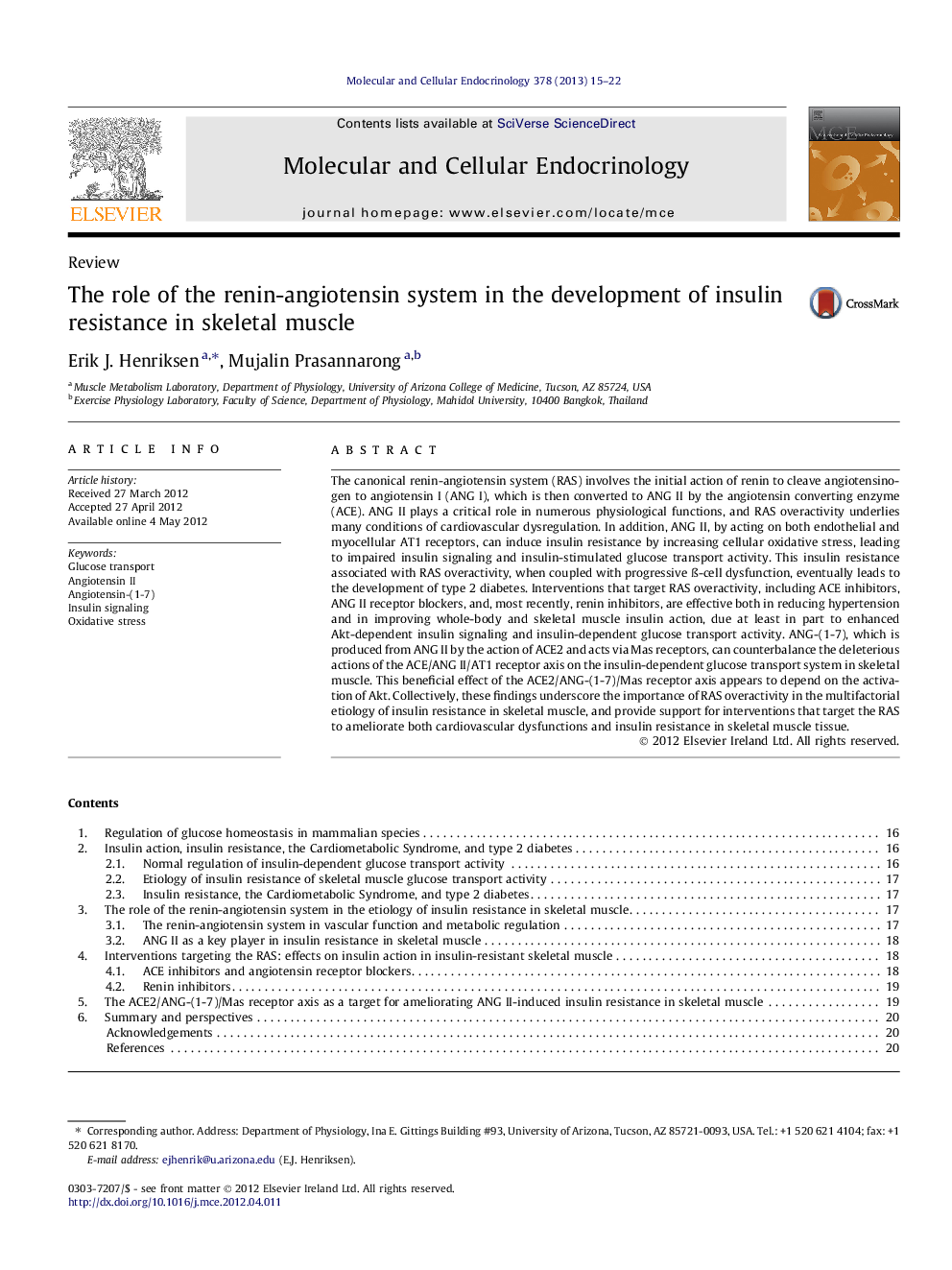| کد مقاله | کد نشریه | سال انتشار | مقاله انگلیسی | نسخه تمام متن |
|---|---|---|---|---|
| 2196151 | 1550899 | 2013 | 8 صفحه PDF | دانلود رایگان |

The canonical renin-angiotensin system (RAS) involves the initial action of renin to cleave angiotensinogen to angiotensin I (ANG I), which is then converted to ANG II by the angiotensin converting enzyme (ACE). ANG II plays a critical role in numerous physiological functions, and RAS overactivity underlies many conditions of cardiovascular dysregulation. In addition, ANG II, by acting on both endothelial and myocellular AT1 receptors, can induce insulin resistance by increasing cellular oxidative stress, leading to impaired insulin signaling and insulin-stimulated glucose transport activity. This insulin resistance associated with RAS overactivity, when coupled with progressive ß-cell dysfunction, eventually leads to the development of type 2 diabetes. Interventions that target RAS overactivity, including ACE inhibitors, ANG II receptor blockers, and, most recently, renin inhibitors, are effective both in reducing hypertension and in improving whole-body and skeletal muscle insulin action, due at least in part to enhanced Akt-dependent insulin signaling and insulin-dependent glucose transport activity. ANG-(1-7), which is produced from ANG II by the action of ACE2 and acts via Mas receptors, can counterbalance the deleterious actions of the ACE/ANG II/AT1 receptor axis on the insulin-dependent glucose transport system in skeletal muscle. This beneficial effect of the ACE2/ANG-(1-7)/Mas receptor axis appears to depend on the activation of Akt. Collectively, these findings underscore the importance of RAS overactivity in the multifactorial etiology of insulin resistance in skeletal muscle, and provide support for interventions that target the RAS to ameliorate both cardiovascular dysfunctions and insulin resistance in skeletal muscle tissue.
► RAS overactivity is associated with both hypertension and insulin resistance.
► ANG II induces oxidative stress and impaired insulin action in skeletal muscle.
► Renin inhibitors, ACE inhibitors, and ARBs improve skeletal muscle insulin action.
► ANG-(1-7) ameliorates ANG II-associated insulin resistance in skeletal muscle.
Journal: Molecular and Cellular Endocrinology - Volume 378, Issues 1–2, 25 September 2013, Pages 15–22